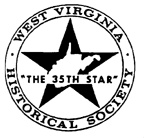 |
West
Virginia
|
 |
West
Virginia
|
| "Out of the south and out of the East they came, and out of Joplin, Missouri, and Pitcher, Oklahoma, searching their way toward the rocky, irregular state. Depression-ridden and work-hungry, they set out, leaving their families behind. . . . 'Jesus Christ, money in your pocket!' A fellow said there was work in West Virginia. 'They're diggen a hole through a mountain in West Virginia. Even the niggers are maken forty cents.'" --Hawks Nest, a novel by Hubert Skidmore | The thirties. Hard times. The promise of work, a big tunnel job, is passed along the grapevine, so men hop freight trains headed for the West Virginia hills. The drama that unfolded, the exploitation of workers in the darkest days of the Depression, was later judged by a Congressional subcommittee to be "hardly conceivable in a democratic government in the present century." Hundreds of men contracted a mysterious disease while excavating a tunnel near Gauley Bridge, West Virginia and began "dying like flies" within a year after the job began. Some thought it was pneumonia, some thought "fever." A company doctor, in a ludicrous flight of fancy, called it "tunnelitis."1 One West Virginian summed it up simply: "You look at that tunnel there, and you think it's a mighty fine thing. Just from looking at it, a man would never know how many lives were sacrificed."2 The tunnel was of singular importance to the expanding Union Carbide and Carbon Corporation, which was developing he technology and markets for a whole new world of alloyed metals, chemicals and plastics.3 The Kanawha Valley promised ample resources to support a permanent chemical plant, should the experimental venture prove successful, so in 1920 the corporation bought a small gasoline plant with a compressor station and natural gas supply in Clendenin, and set up shop with only a handful of enterprising young chemists.4 |
|
"I was there diggin' that tunnel for six bits a day, Didn't know I was diggin' my own grave. Silicosis eatin' my lungs away. Six bits for diggin', diggin' that tunnel hole, Take me away from my baby, It sho' done wrecked my soul. Now tell all my buddies, tell all my friends you see, I'm going away up yonder. Please don't weep for me." --"Silicosis is Killin' Me," a blues ballad from the collection of Alan Lomax |
Rumors circulated wildly about the number of men dying. Some were dumped in the river bed and covered with the tunnel rock. Others were transported to Nicholas County and buried unceremoniously on a private farm. Pneumonia was given as the cause of death in most instances.7 In May, the Chief of the State Department of Mines began an investigation of working conditions on the tunnel project. According to the Fayette Tribune, the investigation was "precipitated by an unusual number of deaths . . . through accidents and disease: and the death rate was "high, especially among colored workers." No report, or any further mention of the investigation appeared in the local newspaper. In the fall, alarming numbers of men became sick with what was believed to be pneumonia. They complained of chest pains, shortness of breath and of generally feeling rundown.8 All along, the wives of tunnel workers feared the powdery tunnel dust which collected in the hair, in the eyebrows and on the clothes of their menfolk. When they came home from work and dropped their clothes on the floor, the dust would scatter all over the room. Some of the wives and mothers were not satisfied with the company doctor's diagnosis. In desperation, they pooled their money to put the sicker boys in a Charleston, West Virginia hospital for x-rays. The x-rays were read by a local doctor, Leonidas Ryan Harless, who became intrigued with what he saw.9 |
 West Virginia Historical Society
Home
West Virginia Historical Society
Home